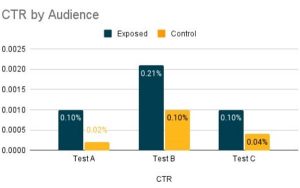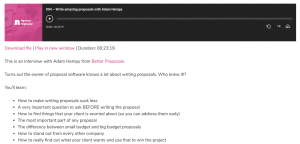
Long gone are the days when a consumer would get excited about receiving a new email. The Radicati Group estimates that this year, the number of emails sent and received per day will total over 215.3 billion. This massive number is expected to grow at an average rate of 4.6% over the next four years.
With consumers accessing this large volume of emails across multiple devices and email accounts, there is clearly a lot of distraction in the space. Marketers need to make sure their emails stand out against all the other emails competing for attention.
According to Infosys, 59% of customers say that personalization influences their shopping decisions. Meanwhile, half of respondents to a Retail Touchpoints/Magnetic survey say that they have received emails from retailers with irrelevant information. It’s pretty clear that ensuring that marketing emails are relevant to each individual is the best place to start to cutting through the noise.
Think About Point of Consumption
Timing is a critical component to relevancy — what is relevant to a person at one moment may be out of date to that same person later. Unfortunately, you have no control over how and when your email is consumed. Once the email leaves your servers, the recipient chooses when to consume the information. He or she could open it within a minute, a day, or a week from the time that it’s sent.
During this time, circumstances can change. A recipient could have already viewed the content you sent, or he could have shown interest in a different type of product. If the content of your emails cannot update dynamically based at the time the email is opened, rather than when it is sent, you are missing a valuable opportunity to be relevant.
If you’re like most marketers, you have three main types of emails: batch and blast, promotional, and behaviorally targeted. Let’s explore how email open times can create more relevant experiences across these three types of emails.
Batch and Blast Emails
These emails are the ones you send to everyone on your list for general communication, remarketing, and education about your brand — such as a regular newsletter.
Many companies have a dedicated portion of their batch and blast emails for general promotions. For example, let’s say that you reserve a section of your regular newsletter to promote your mobile app. If a recipient already has the mobile app, this real estate is wasted. You could use this space instead to encourage another action you’d like the recipient to take, or promote content or products.
When the decision on what to show is based on email open time, or “open time decisioning” as we call it, you can remarket with complete relevancy.
Promotional Emails
Promotional emails are a great tactic to drive customers to return to your site, since they encourage immediate conversion. And because sales often start and end at specific times, promotional emails contain time-sensitive information. But customers are busy and already bogged down in emails, so they won’t always view your emails immediately.
So when a customer opens one of your promotional emails after a sale has ended, you have lost the opportunity to engage that customer. Open time decisioning ensures that this opportunity is not wasted by appropriately determining content based on when email is opened instead of when it’s sent.
For example, let’s say you are offering a pre-holiday sale that runs for a finite period of time. If a recipient doesn’t view the email until after the promotion has ended, you can show her specific messaging such as “Just for You — One More Day!” or you could re-engage her with personalized content to make every touchpoint an opportunity.
Behaviorally Targeted Emails
Behaviorally targeted emails are typically sent to customers based on a recent action they took on the e-commerce site (for example, abandoned a cart). These types of emails are an effective strategy to guide shoppers down the conversion path. But as with the other strategies, relevancy at the point of consumption is critical in making the strategy effective.
Relevancy is critical because customers can engage with your brand between when you send the email and when they open it. If a customer has continued to engage with your site after the email is sent, the email may no longer reflect his preferences, or, worse, it may recommend something he already bought! In this case, you have once again lost an opportunity to optimize the moment. Open time decisioning ensures that this moment is not lost.
Final Thoughts
Whether you’re a B2C or B2B marketer, you can safely assume that your target audience has a cluttered inbox. They are accustomed to receiving emails that are irrelevant to them and are quick to delete. If you understand the value of personalization on other channels, don’t forget to think about the open time of your emails.
Digital & Social Articles on Business 2 Community(41)
Report Post







